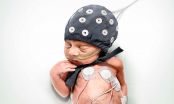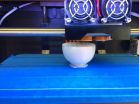(Press-News.org) Giant strides have been taken in the early care of very premature infants in postnatal intensive care units during the past two decades. Doctors can now support the function of especially the lungs, heart and the circulatory system so as to guarantee the survival of most of even extremely premature infants.
Despite a good start, many of these may still have lifelong problems with brain function, such as attention deficit disorders or difficulty with visual function. For this reason, the primary focus of developing care for premature infants has been on securing brain development.
The biggest risks in the development of a very premature baby are concentrated on the first days of life, when intensive care seeks to find the care balance suitable for each individual child.
"At this stage it would be vitally important to be able to track the child's brain function and to identify the babies whose brains are at particular risk," says Sampsa Vanhatalo, PhD, who leads the University of Helsinki's Baby Brain Activity (BABA) research group based at the HUS Children's Hospital.
The brains of very premature babies being treated in intensive care have been tracked with continuous electroencephalography (EEG) monitoring, but evaluating the EEG results has proven to be a challenge:
"The brain function of very premature babies is completely different from that of older children or adults, meaning that the currently used methods of EEG interpretation are poorly suited for use on premature babies," Vanhatalo explains.
Storms help the brain mature
Researchers have found that certain episodes, brainstorms of a kind, occur in the brains of very premature babies and are critical for the maturation of the baby's brain. Together with Swedish and Australian researchers, Vanhatalo has now developed a completely new way of evaluating such brainstorms in newborn very premature infants.
"Our research was published in the journal Brain, and it is the result of exceptionally broad-based international cooperation. It involved specialists of different medical fields, physicists, mathematicians and engineers," Vanhatalo says.
The patient material for the research came from Dr. Lena Hellström-Westas' research on premature babies in Sweden. Hellström-Westas is a professor in neonatology at Uppsala University. Vanhatalo contributed the neurophysiological expertise of his research group. Finally, Professor Michael Breakspear's computational neuroscience research group in Australia developed a new kind of analysis method for the EEG signal.
The laws of nature hold true in the brain
Breakspear's research group began to develop mathematical methods used in geology and basic physics research after it was found that the brainstorms in very premature babies were astonishingly similar to the "crackling noise" that occurs on small scales in weakly magnetised metals and large-scales during earthquakes.
Ultimately, the research groups worked together to generate a clear instrument, a brainstorm barometer if you will, which can be used by a computer to calculate the state of a very premature baby's brain during the first hours of life. Of greatest clinical interest was the observation that the results from this barometer correlated significantly with the child's cognitive development at age two.
"In terms of science, this has already revolutionised the idea of what we can observe of the brain function in very premature babies. This method is the first source of objective data on the messages the brain of a very premature baby may be sending to the doctors taking care of the child during the first hours of life," Vanhatalo describes.
"It's still too early to say how the brainstorm measurements we have discovered will impact the care given to each premature baby. Our discovery helps doctors identify which children are in need of special attention, and which ones have brains that are fine on their own. This is crucial information that opens the door for new targeted care studies."
The EEG instrument created in the study is a collection of sophisticated mathematical functions, combined ingeniously to create a software component for analysing the EEG signal. This component can be added to the software of existing brain monitors. In terms of technology, the adoption of the method is no more difficult than downloading new apps onto our smartphones.
"The interest of EEG monitor manufacturers to engage in product development will be the bottleneck. Luckily the market is very competitive, and new manufacturers need to introduce innovations that are necessary for hospital work," Vanhatalo points out.
INFORMATION:
HANOVER, N.H. - If you're a college student wondering how your study and party habits will affect your GPA, wonder no longer. Dartmouth researchers and their colleagues have built the first app that automatically predicts college students' grade point average based on their smartphone data.
The findings offer new ways to improve students' performance, providing real-time feedback on their studying, partying, sleeping, exercising and other conscious and unconscious behaviors to help them stay on track academically.
Dartmouth computer science Professor Andrew Campbell, ...
BLOOMINGTON, Ind. -- Air pollution regulations issued by the U.S. Environmental Protection Agency are estimated to save thousands of lives annually. A new study by researchers at Indiana University says these estimates are more uncertain than commonly believed.
Researchers Kerry Krutilla, David H. Good and John D. Graham of the IU School of Public and Environmental Affairs analyzed the costs and expected lifesavings of nine regulations issued between 2011 and 2013. The bulk of these regulations require national emissions standards for hazardous air pollutants. The analysis ...
PITTSBURGH, May 26, 2015 - Researchers at the University of Pittsburgh School of Medicine have identified two new classes of RNAs that are closely associated with a protein known to be a prognostic biomarker for breast cancer and could play a role in progression of prostate cancer. Their findings were published in the June issue of the scientific journal RNA.
Levels of human Y-box binding protein 1 (YB-1), which is involved in many cellular functions, have been shown to correlate with drug resistance and poor patient outcomes in a variety of cancers. The observation that ...
When Walt Disney created Mickey Mouse, he didn't give much thought to how he might bring his character to life in the real world. But robotics now puts that possibility within reach, so Disney researchers have found a way for a robot to mimic an animated character's walk.
Beginning with an animation of a diminutive, peanut-shaped character that walks with a rolling, somewhat bow-legged gait, Katsu Yamane and his team at Disney Research Pittsburgh analyzed the character's motion to design a robotic frame that could duplicate the walking motion using 3D-printed links and ...
College Park, Md and Annapolis, Md -- A new study from researchers at the University of Maryland (UMD) and the National Socio-Environmental Synthesis Center (SESYNC) demonstrates that the highly contentious debate on climate change is fueled in part by how information flows throughout policy networks.
The UMD and SESYNC researchers found that "echo chambers"--social network structures in which individuals with the same viewpoint share information with each other--play a significant role in climate policy communication. The researchers say that echo chambers may help ...
Ask any molecular plant biologist about RNA extractions and you might just open up the floodgates to the woes of troubleshooting. RNA extraction is a notoriously tricky and sensitive lab procedure. New protocols out of the University of Florida are quicker, more effective, and more reliable than previous methods.
"Obtaining pure and intact RNA samples is essential for sequencing the active genes, or the transcriptome, of a plant," explains botanist Ingrid Jordon-Thaden, who developed the protocols.
The protocols are given in bench-ready form with detailed notes and ...
Adam C. Levine, M.D., an emergency medicine physician at Rhode Island Hospital found that the World Health Organization's current weight-based guidelines for assessing malnutrition in children with diarrhea are not as reliable as measuring the child's upper arm circumference. His research was published in the Journal of Nutrition.
Diarrhea is common among children who visit health facilities in developing nations. The traditional measures for determining whether a child is moderately or severely malnourished are based on assessing the child's weight directly. Levine found ...
Old-school field work meets cutting-edge technology! For decades, researchers have been making artificial eggs out of plaster, wood, and other materials to test how birds identify and reject the eggs that invading "brood parasites" sometimes sneak into their nests. But these methods have many limitations, and a new study published in the open-access journal PeerJ is the first to test the usefulness of 3D printed eggs for research on egg rejection.
Brood parasites are birds that don't build nests of their own. Instead, they slip their eggs into the nests of other species, ...
Scientists at the Molecular Medicine Institute in Lisbon, Portugal, and at the University College London Ear Institute, United Kingdom, have developed a simple and efficient protocol to generate inner ear hair cells, the cells responsible for our hearing and sense of balance. This study is an important step for the future production of large numbers of these cells for use in cell transplantation therapies or large-scale drug screens. The research has just been published in the scientific journal Development at http://dev.biologists.org/.
Sensory hair cells located in ...
COLUMBUS, Ohio - If you're watching television while using a second screen - like a smartphone or tablet - new research suggests that some of the most expensive marketing messages aimed at you are missing their mark.
While the trend of "second screen" use has become pervasive, this is the first study to show that viewers have trouble recalling brands they see (or hear) on TV if they're using such devices.
"Viewers don't even remember that your brand was there on TV because they were busy posting on Facebook or Twitter or reading email," said Jonathan Jensen, who led ...


